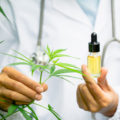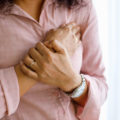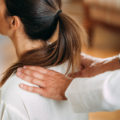Cannabidiol (CBD)

Cannabis is considered one of the oldest cultivated plants in the world and was already cultivated as a crop in Persia and China 12,000 years ago. In India, 5,000 years ago, hemp leaves were also placed on the wounds of injured warriors to relieve the pain.
The first writings on the medicinal use of cannabis, for which almost exclusively the female flowers of the hemp plant are used due to the high amount of cannabinoids contained in them, date back to a Chinese textbook on botany and the art of healing that is around 4700 years old.
The use within Indian culture gives evidence of the use of the psychoactive properties of cannabis. Cannabis is still used there today to support meditation. The hemp plant was described as sacred in the Vedas (India, 1500 to 1300 B.C.), but also in the Chu-tzu (China, circa 300 B.C.). Especially in Central Asia, some of the now rediscovered medicinal properties of the cannabis plant were already known, as evidenced by its traditional use for some neurological diseases.
CBD is the abbreviation for cannabidiol, a phytocannabinoid of the female hemp plant. So it occurs naturally in nature and, unlike the cannabinoid THC, is not intoxicating. CBD therefore does not fall under the German Narcotics Act.
CBD is therefore legal, unlike THC, and can be freely purchased without quantity restriction. Medical use of marijuana began when California became the first state to legalize marijuana for medicinal purposes in 1996, followed shortly thereafter by Alaska, Oregon, and Washington in 1998, followed by Maine in 1999.
Cannabidiol has many uses
The active ingredient cannabidiol can help with epilepsy, schizophrenic psychosis, stress, burn-out, sleep disorders, pain, inflammation, migraine, nausea and vomiting. Today, cannabidiol is also used for many other complaints, such as to alleviate neurological diseases (hysteria, headaches/migraines, tension), but also to treat malaria, rheumatism, gout, tetanus, rabies, spasms in children, delirium tremens.
It is also used as an analgesic for chronic pain or joint inflammation, to relieve muscle cramps, to help with loss of appetite, stomach aches, constipation, insomnia and to aid labour, providing relief for uterine conditions and menstrual cramps. It is also used to support substitution therapy for addiction to opiates and chloral hydrate and to treat glaucoma and asthma.
Animal studies have reportedly shown that cannabinoids inhibit tumour growth and metastasis, as well as inducing cancer cells to “commit suicide” (apoptosis). However, there have only been two studies on this so far, which means that much more research needs to be done here.
Hildegard von Bingen already knew about the power and effect of medicinal plants and wrote a lot about them. For coughs or other cold complaints, she recommended herbs such as lovage, liquorice, wild thyme or bergam (especially for colds).
In addition, according to Hildegard von Bingen, caraway, lavender and ground ivy should support the body in the fight against lung diseases or earache. In addition, according to Hildegard von Bingen, there are the essential oil drugs. However, these only include plants that contain the essential oils in very high concentrations.
The essential oil drugs are said to have the following effects, among others: anti-inflammatory, diuretic, antispasmodic, facilitate expectoration, strengthen the stomach, liver, gall bladder and intestines, combat pathogens of fermentation in the body and fight bacteria. Hildegard von Bingen was also impressed by cannabis: as a remedy for stomach pain or nausea.
Cannabis as medicine
For a long time, cannabis medicines were only approved in Germany for people with spasticity and multiple sclerosis. Since 2017, the “Cannabis as Medicine” law has made it possible also to be prescribed cannabis medication for other serious illnesses. In exceptional cases, doctors may prescribe the pure flowers or cannabis preparations in the form of capsules, drops, oil or as a mouth spray.
Doctors prescribe cannabis products – such as dronabinol drops – to chronically ill patients who cannot tolerate common painkillers or for whom these no longer work.
Insurance companies cover the costs
“People who are seriously ill need the best possible care. This includes that the costs for cannabis as medicine for seriously ill people are covered by their health insurance if they cannot be helped effectively in any other way,” explains the former Federal Minister of Health Hermann Gröhe.
A change in the fifth book of the Social Code (SGB V) ensures this extended cost coverage: In the future, in addition to cannabis-based medicinal products, dried cannabis blossoms can also be reimbursed by statutory health insurance if they are necessary for therapeutic purposes. In future, state-controlled cultivation of cannabis for medicinal purposes is also to be possible in Germany.
However: According to the experience of many pain therapists over the past five years, cannabis is not the drug of first choice because it only helps some of the patients. Sometimes cannabis medicine works in the smallest doses, but often it just does not work.
It is not always possible for physicians to foresee who will be helped and who will not. According to a study, cannabis works best against nerve pain (neuropathy), that arises in the nervous system. Cannabis medicines also seem to be effective in multiple sclerosis, severe weight loss due to tumour disease (tumour cachexia) and in palliative medicine. According to experts, low doses of dronabinol drops, for example, can also be useful for older people with chronic pain.
Cannabis in sports medicine
In the meantime, cannabis has even found its way into sports medicine. The sports injuries that can be treated with cannabis vary from minor to severe depending on the activity and the athlete, but the most common are swollen and sore muscles, fractures, dislocated joints and head injuries.
Legalisation of cannabis
Now the traffic light government in Germany has decided to legalize cannabis. In a press conference, the government declared a corresponding plan that will now be sent to the EU Commission. If the EU Commission has no objections, the purchase and possession of between 25 and 30 grams of cannabis is expected to become exempt from punishment until 2024.
In our opinion, you can think what you want about that. Whether this is a good idea will probably only become clear in a few years. Cannabis use is associated with risks, especially among young people. As the brain is still developing, it can lead to permanent damage such as psychoses, depression and reduced intelligence, warns the AOK.
Statistics on cannabis use
According to the results of the Alcohol Survey 2021 on alcohol, smoking, cannabis and trends of the Federal Centre for Health Education, the proportion of young people aged 12 to 17 who have used cannabis in the last twelve months before the survey has increased from 4.6% in 2011 to 7.6% in 2021.
Among young adults aged 18 to 25, a rebound in 12-month prevalence has been evident since 2008. In relation to all young adults, this amounted to 25 % in 2021 – in 2010 it was still 12.7 %. While the majority of users stick to experimental use, regular and frequent cannabis users represent the real risk group.
Important information
Our posts only contain general information and tips. They are not intended for self-diagnosis, self-treatment or self-medication and do not replace a visit to the doctor.
Experts on the topic
Dr. Maja Falckenberg, Outpatient Pain Clinic Alten Eichen
Hohe Weide 17B
20259 Hamburg
(040) 54 04 060
Dr. Jan-Henrich Stork, Centre for Pain Therapy
Chief physician
Anaesthesia and intensive care medicine
Krankenhaus Tabea GmbH & Co. KG im Artemed-Klinikverbund
Kösterbergstrasse 32
22587 Hamburg
www.tabea-fachklinik.de
Sources:
Wikipedia
cannabis-apotheke.de/die-geschichte-einer-kulturpflanze
bundesgesundheitsministerium.de
Brand EJ, Zhao Z. Cannabis in Chinese Medicine: Are Some Traditional Indications Referenced in Ancient Literature Related to Cannabinoids? Front Pharmacol.
ndr.ratgeber.de
AOK




